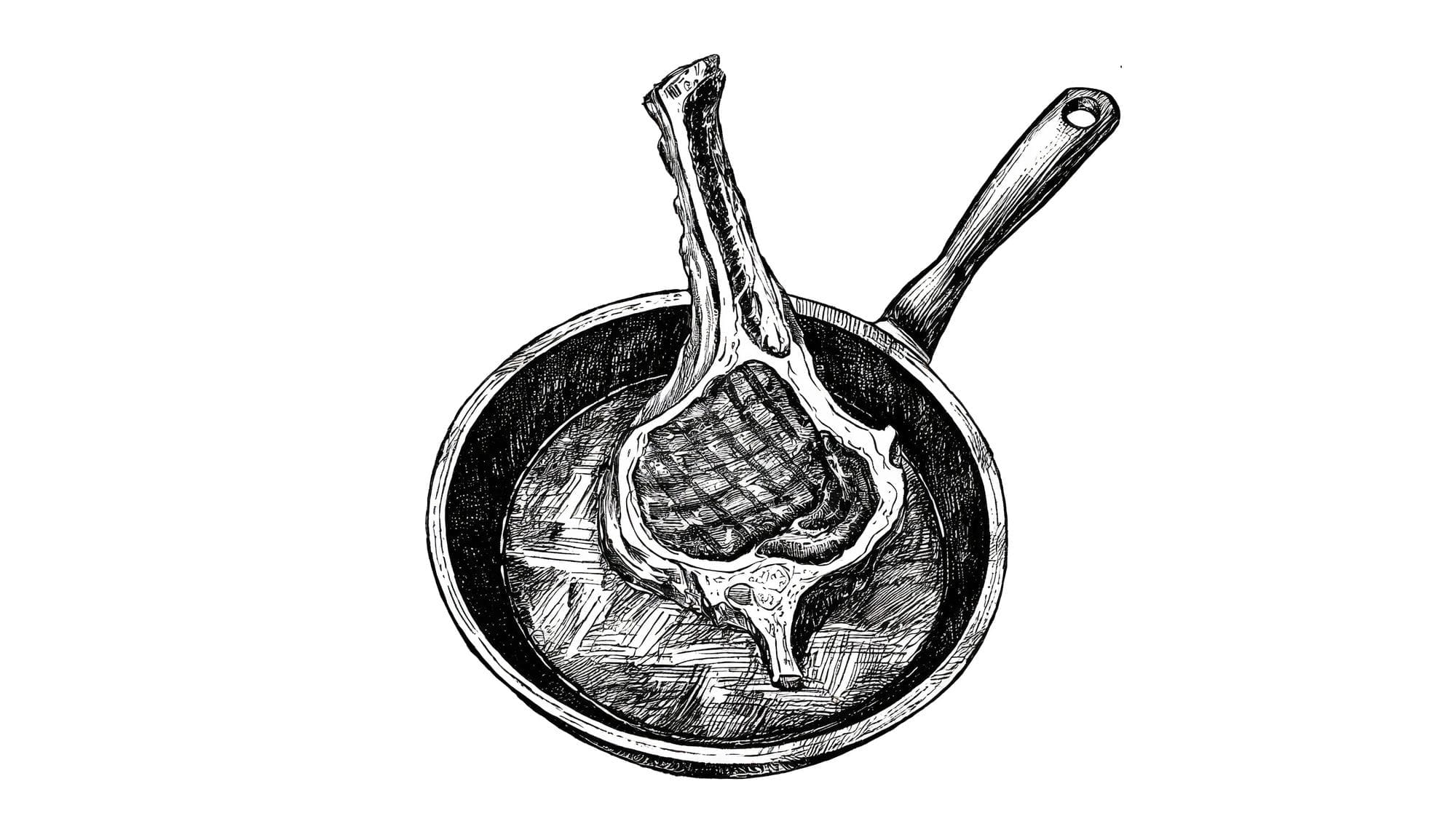Ruth Reichl (American writer/elaborate-wig-wearer/restaurant critic) once wrote that a great steak is bought, not made. Anyone who has ever had a truly magnificent steak knows it instinctively.
For the cook, a great steak begins with the procurement of a slab of raw animal.
One doesn't need any particular sophistication to recognize excellence in such a slab. A steak should be gorgeous. It should call to mind trappings of old money: garnet and ruby and mahogany, interwoven with fine marble veins; all swirling textures and colours and iridescent sheen.
There are so many ways to ruin a steak, a few ways to elevate one.
A quintessential steak, at its best, is a great piece of beef, seasoned with lots of salt, grilled in a very hot pan with plenty of fat, seasoned again (salt), and rested.
The salting and resting is magic. It begets all kinds of wacky chemistry. Muscle fibres expel and then reabsorb moisture, proteins denature, amino acids escape, sugars caramelize. The net effect is that a tough, mild hunk of muscle transmogrifies into something holy. It is honest labor, and the steak does most of the work.
The difference between an average steak and a great steak is not subtle or simple, but also not obvious. The cow is a myriad beast, genetically and environmentally. Its voluminous flesh, especially its fat, stores in its globules memory of life. We can taste this memory. Pasture-raised meat from the greatest breeds — Kobes, Wagyus, Galacian and Finnish beef — can be rich nutty, grassy, earthy, buttery, or even herbaceous. It can be subtle or concentrate, creamy, spicy, or smoky.
Great steak is finally about relationships. The cook’s quest for greatness starts at the butcher, and the butcher’s quest for greatness starts with a farmer or rancher, and the farmer’s quest for greatness starts with her land and her livestock. In this way, to prepare and cook and eat a great steak is to participate in a chain of greatness, but also a chain of goodness that can make the world a little better if we allow it.
The French refer to this as “respecting ingredients,” and this gesture of respect is expansive. It means purchasing the best you can find and treating them carefully; coaxing out maximal concentration and flavour every step of the way.
It also means caring enough about the products you cook with and the lineage of care that created them to learn how to let their greatness to shine. It is an edict of both deference and discipline.
To me, it also means caring about what's on your plate; taking time to eat it, to enjoy it, and if possible to share it. From Epicurus: “We should look for someone to eat and drink with before looking for something to eat and drink.”
This might not always be possible in the non-stop grocery aisle-dom of our times, but with a little effort maybe we can make it more so.
P.S. This looks interesting
Image created with generative AI. Prompt: Tomahawk steak in a frying pan, pen & ink, hand-drawn, birds-eye-view; Firefly; 13 attempts
